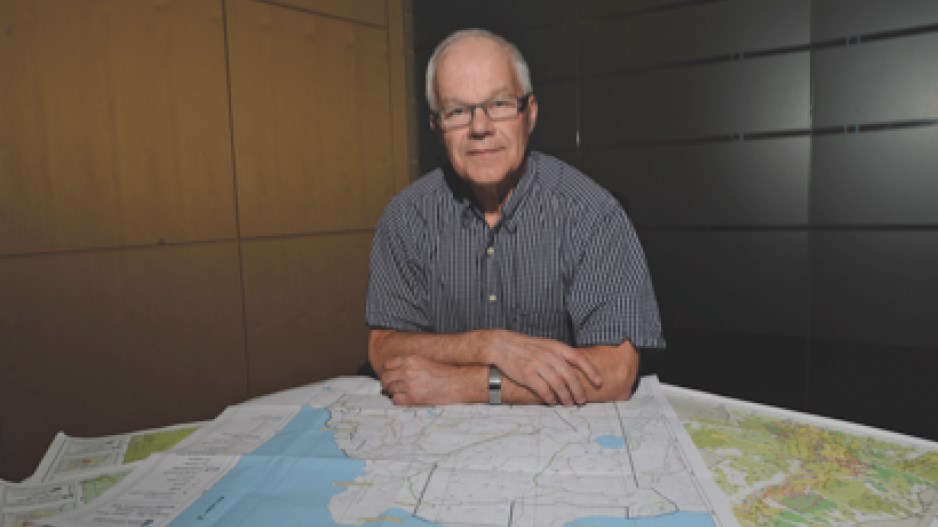Bill Markvoort is wedged between the ministry of forests and Gambier Island conservationists.
The professional forester and vice-president of Probyn Log Ltd. has bids in on two controversial woodlots being tendered for auction by the province. Conservationists want to prevent the sale.
“There's a fear that the whole woodlot is going to be one big clearcut,” he said. “But to have a sustainable allowable cut, you can only take out 1% per year.”
With more than 30 years of forestry experience, Markvoort knows the industry. His timber development company provides a full suite of timberland management services, including engineering, marketing, financing and logging operations. Probyn valuates, finances, transports, sorts and oversees log harvesting for primarily independent loggers and First Nations companies.
He laments the complaints of the proposal's detractors.
“There seems to be a disconnect between the wealth we have in this province that allows us the schools, hospitals and services, and the fact that we are hewers of wood and drawers of water. The average folk understand that. But they're not the ones making the noise.”
Markvoort added that if opportunities for woodlot farming are lost, the livelihoods of loggers, families and their small communities will be put at risk.
The Gambier Island Conservancy and the Future of Howe Sound Society (FHSS) oppose the sale of the woodlots and want the provincial government to put a halt to the bidding.
“There's a failure to consult,” said FHSS executive director Ruth Simons. “There's absolutely a big disconnect. [B.C. forests] minister [Steve] Thomson and his staff are not [consulting] with the public.”
According to the ministry, there are more than 860 active woodlots around the province managing about 1.8 million cubic metres of timber per year. Regulated under the Forest Act and the Forest and Range Practices Act, woodlots are small, area-based tenures. They are often family-owned and -operated and are commonly passed down from generation to generation.
Part of the province's woodlot program, the two Gambier woodlots together make up 19% of the island's total land area.
Provincial woodlots provide income for their owners, revenue for the province through their sale and annual stumpage fees, and wood fibre for the industry. But Simons doesn't see their value.
“What is the economic reality of woodlots?” she asked. “That's the discussion we think should be had. We are specifically opposed to the process by which these woodlots have been determined and subsequently gone to tender.”
Simons insisted the province's consultation process is ineffective and has given the public no say in the matter.
But Thomson disagreed.
“There is an extensive process of community engagement making sure all the values are addressed before the statutory decision-maker awards a licence,” he said.
He said meetings have been held with First Nations, the Islands Trust and the community at large. Thomson added that the woodlots have been advertised, landscape planning undertaken and an archeological overview assessment completed in 2013.
“And there's still a lot of work to be done before a licence is going to be provided,” said Thomson.
The ministry will communicate the community's input to the incumbent woodlot owner, hold stakeholder forums and arrange a public review of the woodlot plan.
But, according to Simons, “that does not meet the definition of consultation.”
Thomson pointed out that a 1999 letter of understanding signed by the Islands Trust and the forests ministry establishes the two woodlots and agrees upon their use.
The woodlots are in an area identified as wilderness conservation in Gambier Island's official community plan and its bylaws, both of which state that one of the permitted uses in the area is the sustainable harvesting of trees, including woodlots.
Thomson acknowledged the concerns of opponents such as Simons but said woodlots offer an environmentally responsible option for timber harvesting. “[Woodlot owners] operate these tree lots with a focus on biodiversity and sustainability,” he said.
According to Simons, the Gambier Island Conservancy is seeking a Supreme Court review of the woodlot tender.




